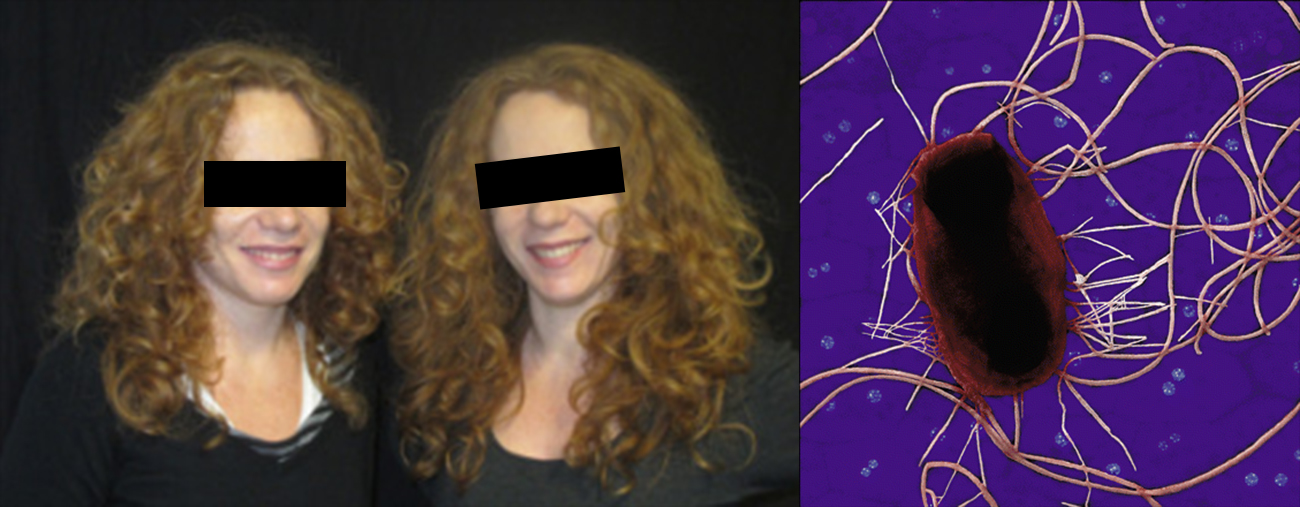11. Biochemistry of the Genome
11. Introduction

Children inherit some characteristics from each parent. Siblings typically look similar to each other, but not exactly the same—except in the case of identical twins. How can we explain these phenomena? The answers lie in heredity (the transmission of traits from one generation to the next) and genetics (the science of heredity). Because humans reproduce sexually, 50% of a child’s genes come from the mother’s egg cell and the remaining 50% from the father’s sperm cell. Sperm and egg are formed through the process of meiosis, where DNA recombination occurs. Thus, there is no predictable pattern as to which 50% comes from which parent. Thus, siblings have only some genes, and their associated characteristics, in common. Identical twins are the exception, because they are genetically identical.
Genetic differences among related microbes also dictate many observed biochemical and virulence differences. For example, some strains of the bacterium Escherichia coli are harmless members of the normal microbiota in the human gastrointestinal tract. Other strains of the same species have genes that give them the ability to cause disease. In bacteria, such genes are not inherited via sexual reproduction, as in humans. Often, they are transferred via plasmids, small circular pieces of double-stranded DNA that can be exchanged between prokaryotes.
Media Attributions
- OSC_Microbio_10_00_HumvsBactG

